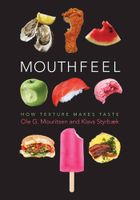Label
All
0
Clear all filters
🔥 Try our grilling cookbooks and save 25% on ckbk membership with code BBQ25 🔥
When We Chew, We Are Using the “Taste Muscles”
Appears in
By Ole Mouritsen and Klavs Styrbæk
Published 2017
The muscles of the tongue and the jaws have developed to carry out a whole range of mechanical processes in the mouth. First, the incisors grasp the food firmly and cut off a piece, then the canines hold it in place, and finally the molars get to work crushing and grinding it so that taste and aroma substances are released and the food is in small enough particles to be swallowed together with some saliva. While this is happening, the tongue has to be able to carry out acrobatic movements to explore the food, turn it over, and swirl it around, especially if a liquid is involved, place it between the teeth, and finally search out bits that have gotten stuck between the teeth and the lips or cheeks. Chewing serves both to reduce the food into small pieces and to bind these together with saliva to form a ball of food (bolus) that is easy to swallow.
Part of
Advertisement
Advertisement
The licensor does not allow printing of this title


